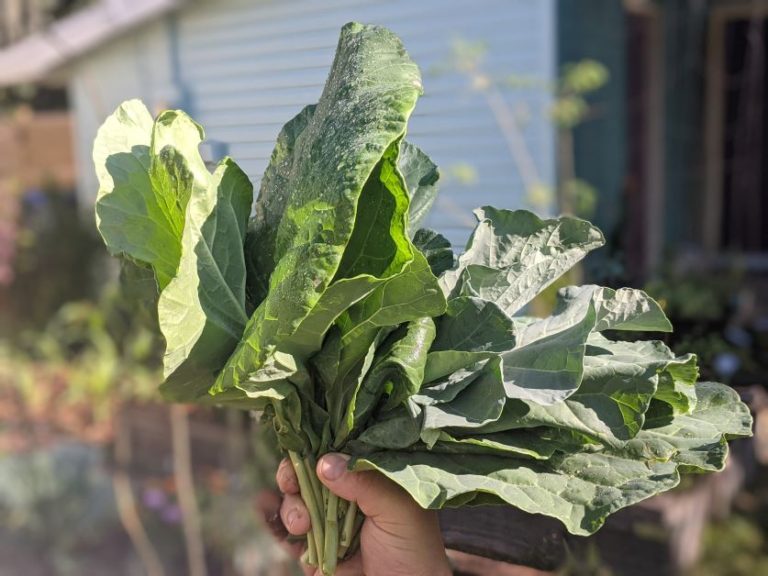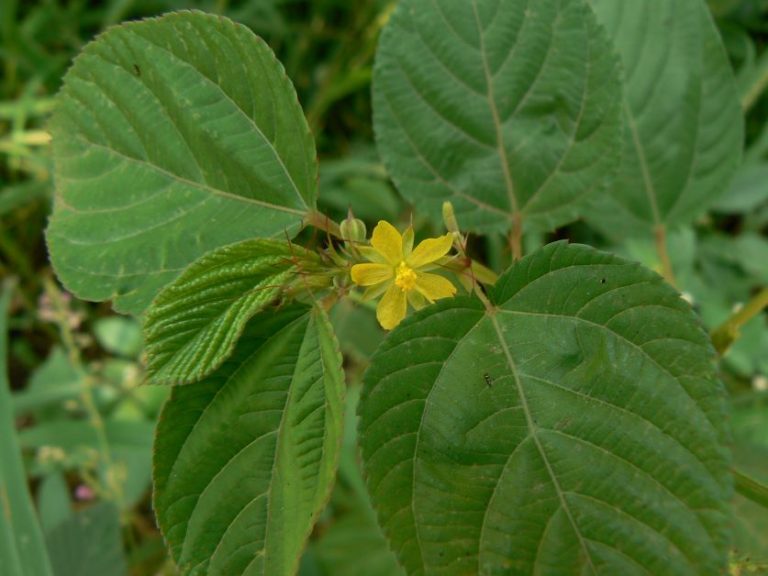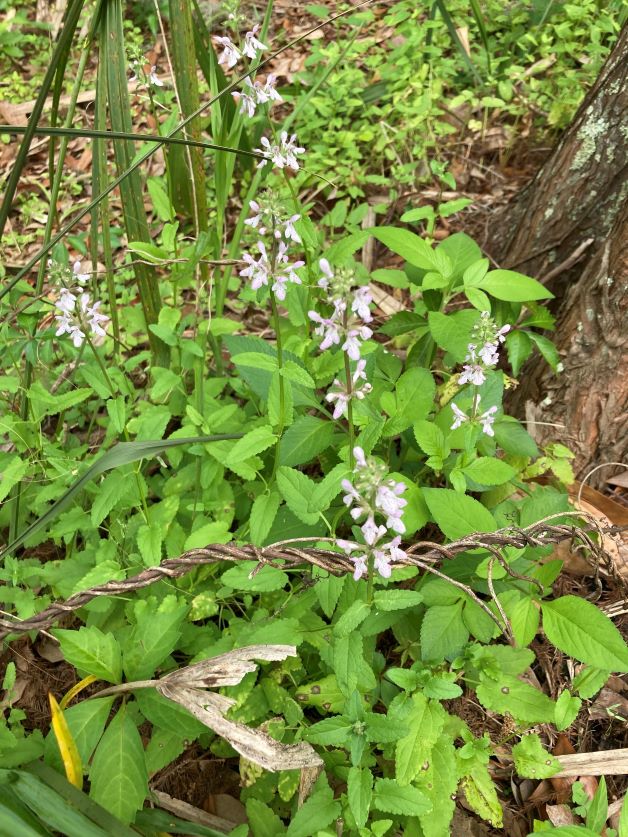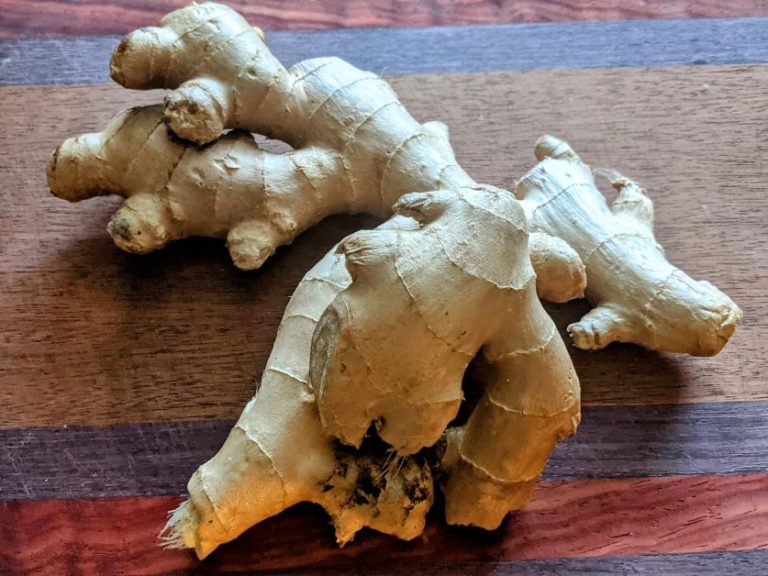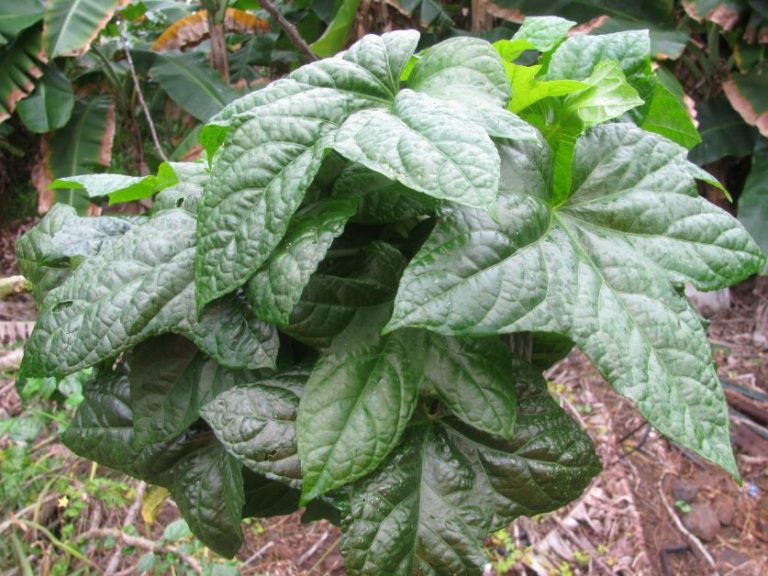How to Grow Herbs in Florida
The key to learning how to grow herbs in Florida is to plant species that can handle our extreme temperatures, high humidity, and heavy pest pressure. Plant these 10 easy-growing herbs to all but guarantee a successful harvest in a subtropical climate.
Holy Basil

I love sweet Italian basil, but I’ve never had much success with it in my Florida garden. The high heat and humidity create fungal and bacterial issues for this species.
Instead of struggling with sweet basil, I’ve switched to holy basil. It does awesome in our subtropical climate and is naturally pest-resistant.
Holy basil, also known as tulsi, is native to India. It’s not only used as food but also in religious ceremonies and as a traditional medicine. Herbalists use holy basil to help treat the common cold, inflammation, stomach and skin issues, among other ailments. Holy basil supplements are a common find in health food stores.
This plant has small, triangular leaves that aren’t as tender as sweet basil. It grows into a big bush with woody stems. When it bolts, holy basil produces small purple flowers that are irresistible to bees. For this reason, I grow my holy basil in a 5-gallon container and keep it next to my vegetable garden to attract pollinators.
Holy basil has that distinct basil flavor, but it’s spicier and a little more bitter than sweet basil. I use holy basil in the same way as I use any other basil, but I add less than usual. The flavor is bold and a little bit goes a long way.
Holy Basil Care
- Light – full sun to part shade
- Temperature – USDA hardiness zones 9-11; temperature range 70F+
- Soil – anything well-draining; sandy to loamy; soil pH 6 to 7.5
- Water – moderately drought-tolerant; for best results, keep soil moist but not soggy
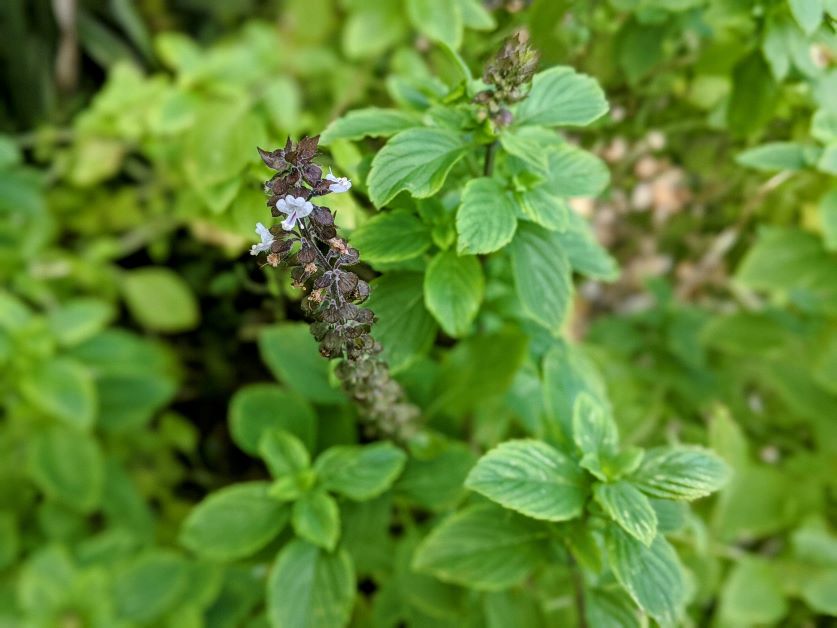
Rosemary

When I think of rosemary I think of the holidays, so I was surprised to learn that rosemary is a hot weather plant. Once the plant is established, it goes wild in our subtropical climate.
This herb will grow into a large bush if you let it. Some people in Florida grow rosemary for its ornamental value and use it as a hedge. This evergreen bush can even be pruned into topiary shapes.
Rosemary takes a long time to grow from seed, so I prefer to grow it from cuttings taken from a live plant.
To grow rosemary from a cutting, snip off a healthy, young stem from a rosemary plant. Chose a stem that’s green and not woody, and is 4-6 inches long. Remove the leaves from the bottom third of the stem and stick the stem in a 1-gallon container filled with well-draining potting mix. Water your cutting and keep the soil moist but not soggy. Keep your cutting in a warm place that gets indirect sunlight. Your cutting should root in 30-45 days, but you should wait 3-4 months before transplanting from the pot to make sure your plant is hardy.
Rosemary Care
- Light – full sun
- Temperature – USDA hardiness zones 8-10; thrives in 60F-85F and suffers below 30F
- Soil – sandy to loamy; well-draining; slightly acidic with a soil pH of 6.0-7.0
- Water – drought-tolerant when established
Oregano
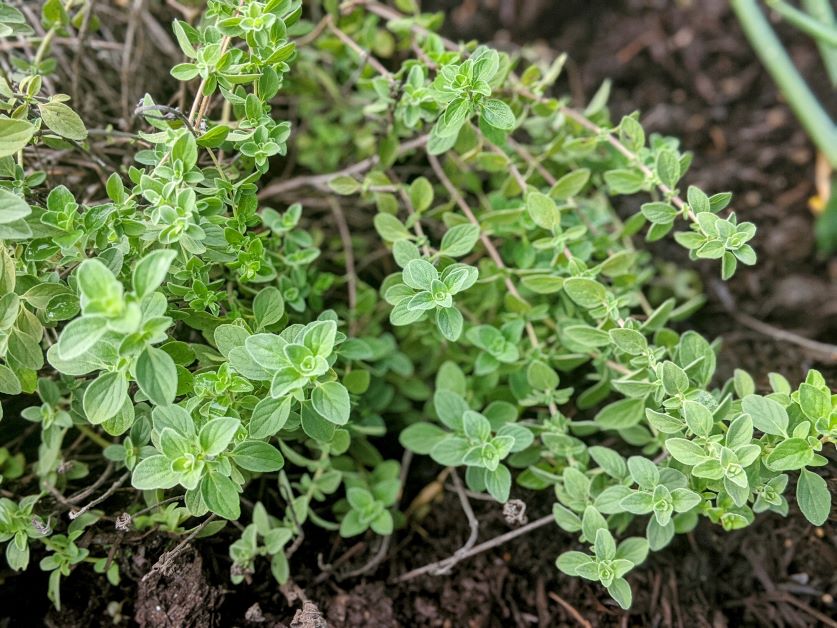
Rosemary and oregano are a lot alike when it comes to care, so they’re great herbs to grow together in the same pot or garden bed.
Rosemary grows year-round in Florida but oregano is a little more sensitive. It’s a perennial in zones 5-10 but it does die back if it gets too hot or too cold. If your oregano does turn brown and drop leaves, leave it planted where it sits but cut off the dead leaves and stems. When the temperature adjusts back to oregano’s ideal range of 55F-70F, it’ll start to grow back.
Oregano is easy to grow from seeds or from cuttings off of live plants. Because oregano does best at room temperature, it’s a great herb to grow as an indoor potted plant.
Oregano Care
- Light- full sun to part shade
- Temperature- USDA hardiness zones 5-12; suffers in extreme heat (90F+) and is frost-sensitive
- Soil- well-drained; slightly acidic 6.5-7.0
- Water- drought-tolerant; take care not to overwater
Papalo
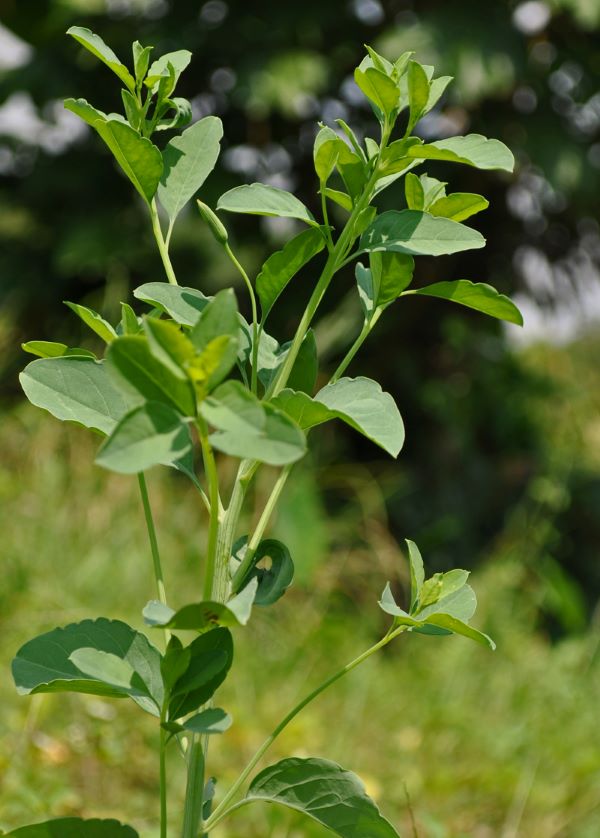
If you’ve ever tried to grow cilantro in Florida, you probably had a hard time with it bolting. Instead of cilantro, grow papalo instead. Papalo is a leafy herb that tastes like a cross between cilantro and arugula. It’s native to Mexico and instead of bolting when it’s hot, it bolts when the weather gets cool.
This plant grows up to 5 feet tall and 3 feet wide. Papalo seeds are a lot like a dandelion — little puffy wisps. In subtropical climates (like Central and South Florida) it’s self-seeding. Papalo is a wild plant that’s especially easy to grow when the weather is hot.
For full care instructions, check out my papalo growing guide.
Culantro

My introduction to culantro was finding it growing wild in my urban backyard. I thought it was a weed until one of my Florida native friends told me what it was – a cilantro substitute. I guess that’s a testament to how easy this herb can be to grow.
Culantro is a popular herb in the Caribbean, Cuba, Mexico, South and Central America, and East Asia. It tastes much like a stronger version of cilantro and is a main ingredient in the popular dish sofrito.
Culantro grows skinny lettuce-like leaves and when it bolts, it puts out long pokey growths with little flower buds on the ends. This part of the plant is too spiny to eat. You can slow the bolting of culantro by growing it in part shade.
If you’re in North Florida, your best bet is to grow culantro in containers so that you can bring it indoors during winter. Those in Central and South Florida can grow culantro outdoors year-round as long as you protect it from frost.
You can buy live culantro plants online or grow them from seed. Do note that while culantro seeds aren’t hard to grow, it cant take 3 or 4 weeks for them to germinate.
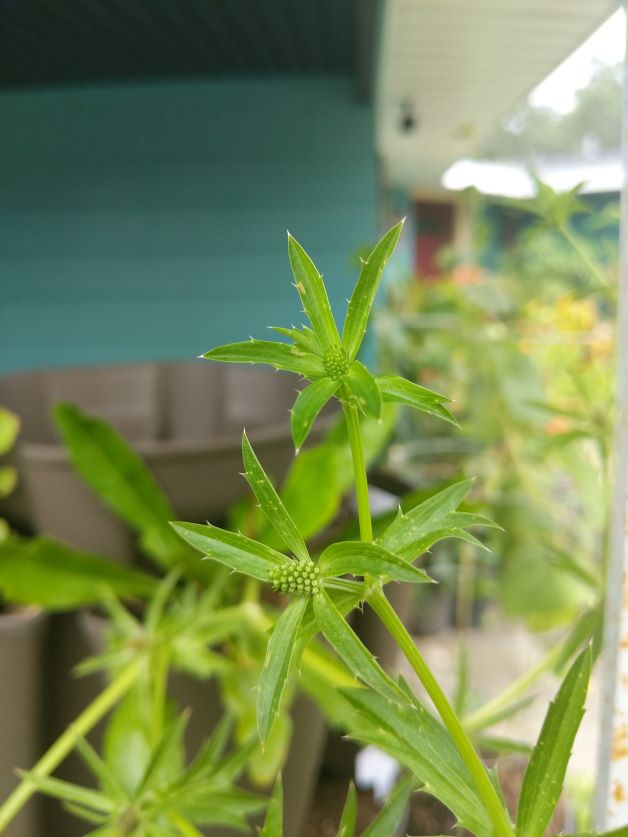
Culantro Care
- Light- part shade
- Temperature- USDA hardiness zones 9B+; ideal temperature range 70F-90F
- Soil- fertile and well-draining; ideal soil pH range of 6.0-7.0
- Water- not drought-tolerant; keep soil moist but not soggy
Indian Borage
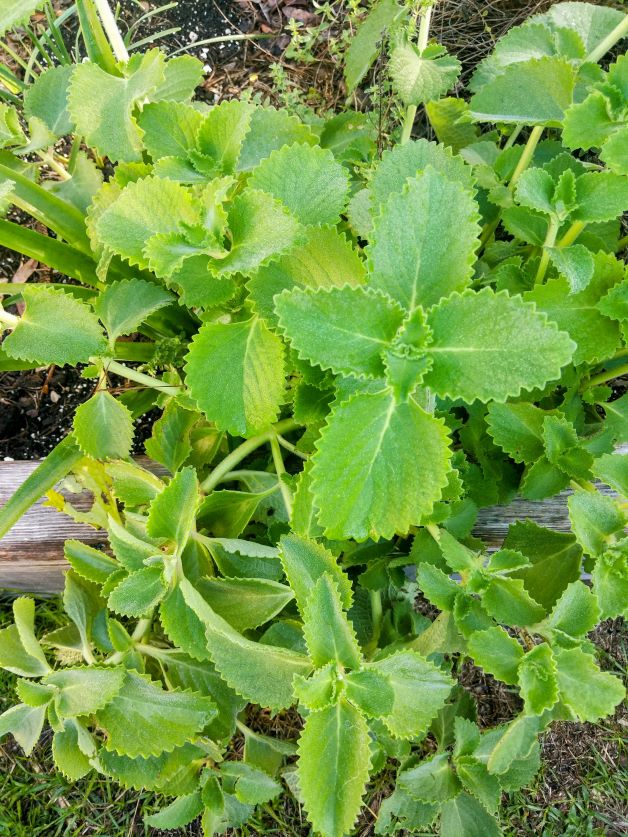
Along with culantro, I found this plant in my backyard. It was growing in the crook of a giant oak tree. I don’t think that this is a normal place for Indian borage to grow – maybe the people who owned my house before me stuck it there? Regardless, it was growing like crazy and smelled a lot like oregano, so I had to do more research to figure out this mystery plant.
Indian borage is also called Mexican mint, Cuban oregano, Spanish thyme, and broad-leaf thyme. It’s native to Africa and India.
You can grow Indian borage in a pot, a raised bed, or in the ground. If you keep it in a pot and prune it, the plant will stay small and manageable. I have my Indian borage growing in a raised bed and it sprawls out of control if I let it go.
The easiest way to grow this herb is to take cuttings or to buy a live plant. Legit Indian borage seeds can be hard to find — this species is often confused with other plants that are similar but not actually Indian borage.
Indian borage has unique leaves that are big and a little hairy – they feel velvety, like an African violet. You can chop them up and use them fresh the same as you would thyme or parsley, or they can be dried and used later.
Indian borage is known for its medicinal properties. It’s said to help with asthma, bronchitis, sore throat, congestion, and the common cold. You can chew the leaves fresh to help open up your sinuses or dry the leaves to make tea.
Indian Borage Care
- Light – part sun to part shade; the hotter it is, the more shade it’ll benefit from
- Temperature – USDA hardiness zones 9-11; can handle high temperatures but is sensitive to frost
- Soil – anything well-draining; soil pH 6.0 to 7.5
- Water – drought-tolerant when established
Mint

I like growing mint because it’s hard to screw up. In fact, it’s so easy to grow that it’ll take over your garden if you let it. If you only take away one thing from this article, let it be this: ALWAYS GROW MINT IN A CONTAINER! Mint is a vigorous spreader that can quickly become invasive.
As long as you keep it in a spot that gets plenty of sunshine, mint makes a good houseplant. Keeping it in the house will also mean you don’t need to worry about it growing out of control.
Some brave souls use mint as an edible ground cover since it spreads so easily. If you go this route, just be sure to plant it far, far away from anything else that you don’t want to be choked out. Mint is perennial. It dies in winter but will bounce back once the weather starts to warm up.
Most people buy live mint plants instead of growing them from seed. They’re also easy to propagate from runners. Just clip off a runner, plant it in a pot and water it in.
Some popular varieties of mint include spearmint, chocolate mint, and peppermint.
Mint Care
- Temperature – USDA hardiness zones 3-11
- Light – part shade
- Soil – fertile and well-draining; soil pH 6.0-7.0
- Water – needs a moderate amount of water; keep soil moist but not soggy
Lemongrass
In Florida and other subtropical climates, lemongrass makes for a great edible ornamental. It looks best planted in clumps, in the same way as you’d plant muhly grass.
Lemongrass is native to India, so it does well in our harsh summers. It’s also a natural mosquito repellant – a HUGE plus in the Florida garden.
This is a perennial plant in Central and South Florida. It stays green for most of the year and dies back when the weather gets cooler. This is a good time to do some pruning to encourage new growth at the start of the next season.
Towards the bottom of the plant, you’ll find a thick stalk. This is the part of lemongrass that’s used in cooking. You can slice it and add it to dishes or boil the stalks to make tea.
If you don’t want to buy an already rooted plant, you can grow lemongrass from a stalk bought from the grocery store. Stick a stalk into a glass of water until it forms roots, and then plant it into a container until it’s big enough to move to the ground.
Lemongrass Care
- Temperature – USDA hardiness zones 9-10; suffers when temperatures are lower than 40F
- Light – full sun to part shade
- Soil – important that soil is very well-draining and sandy;
- Water – moderate; don’t overwater; lemongrass is prone to rotting
Ginger
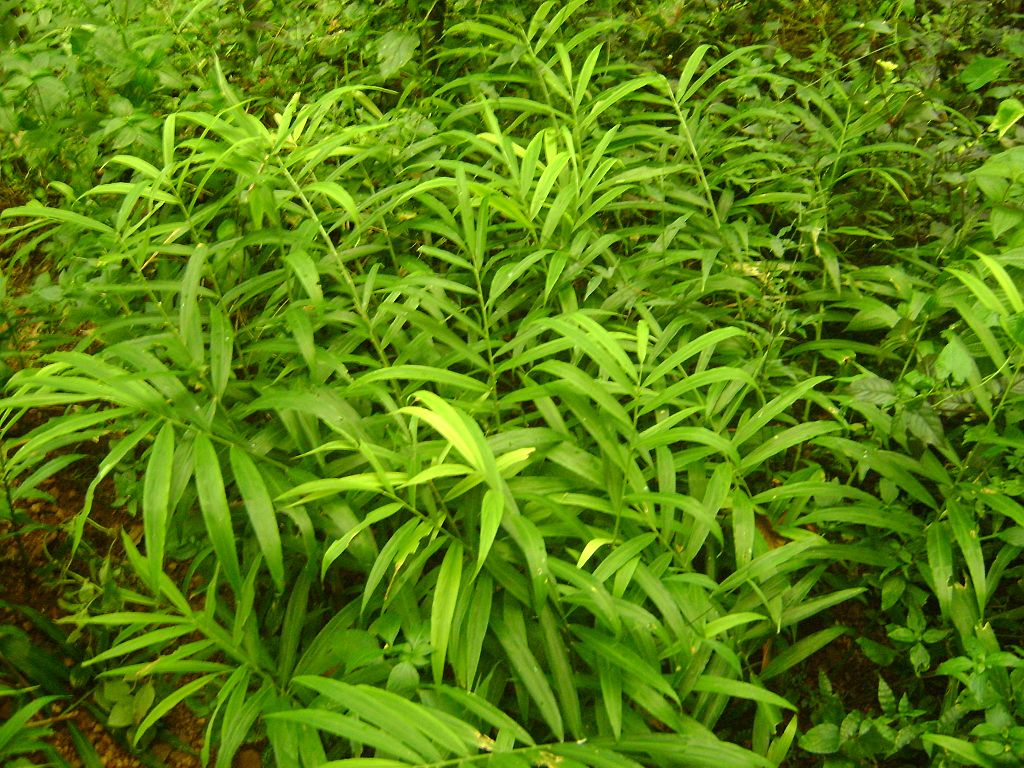
Do you have a shady spot in your yard that’s going to waste? If so, then ginger is the plant for you!
Ginger is a rhizome, which is a fancy way of saying a chunk of root. When you buy fresh ginger from the produce section, you’re buying the rhizome.
Ginger grows by sending out shoots and roots from the rhizome, both vertically and from side to side. Turmeric, galangal, and lotus root are also rhizomes. Those in Central and South Florida can grow ginger outside as an edible border plant. North Floridians should grow their ginger in containers so they can overwinter them in times of frost.
The coolest thing about growing ginger is how easy it is to propagate from what you buy at the grocery store. For more information, check out my ginger growing guide.
Turmeric
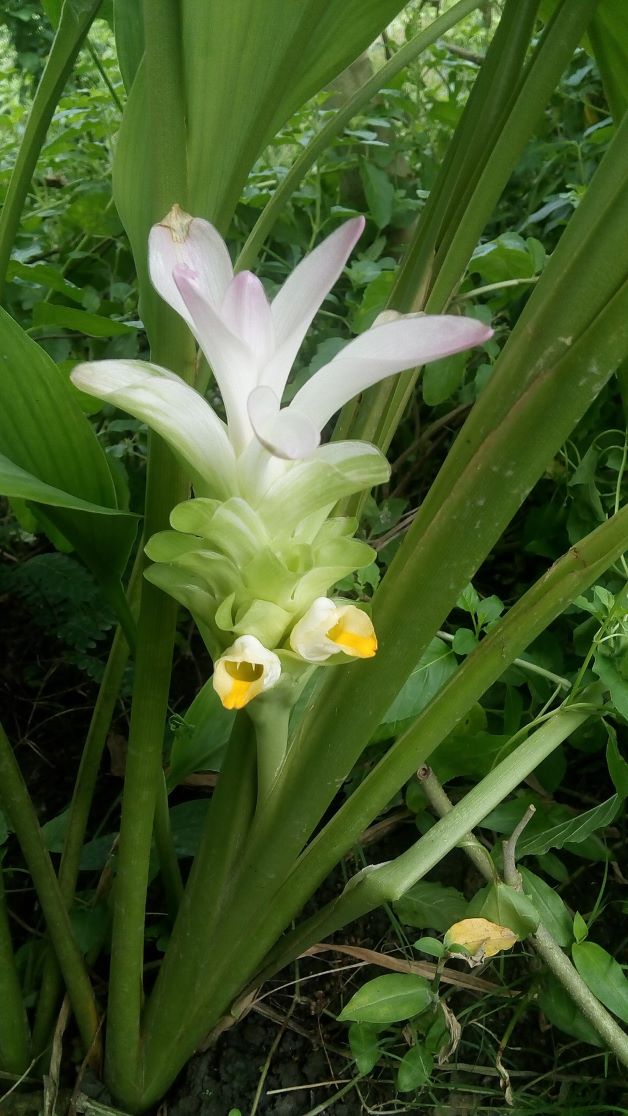
Turmeric is a lot like ginger, both in taste and how it grows. It needs part to full shade, hot and humid weather, and also grows from a rhizome. Turmeric has skinny, oval-shaped leaves and produces tropical-looking flowers. It’s very ornamental and can be grown in a container.
Turmeric is a little bit spicy and is a common ingredient in Indian curry. It also makes whatever dish you put it in a bright yellow color (along with your hands and cutting board, too).
Turmeric is a popular health food because it contains a compound called curcumin. Curcumin is known as an anti-inflammatory, helps your heart stay healthy, and is full of antioxidants.
Like ginger, you can grow turmeric from fresh pieces you buy from the grocery store. Just be sure to let your turmeric pieces dry out before planting instead of soaking them as you would with ginger.
Turmeric Care
- Temperature – USDA hardiness zones 8-10; can handle high temperatures but sensitive to frost
- Light – part shade
- Soil – well-draining and fertile; sandy; soil pH 4.5-7.5
- Water – needs a moderate amount of water but should never stay soggy; prone to rotting
Disclaimer: Offbeet-Gardener is reader-supported. At no extra cost to you, I earn commissions from purchases made through links in this post.


